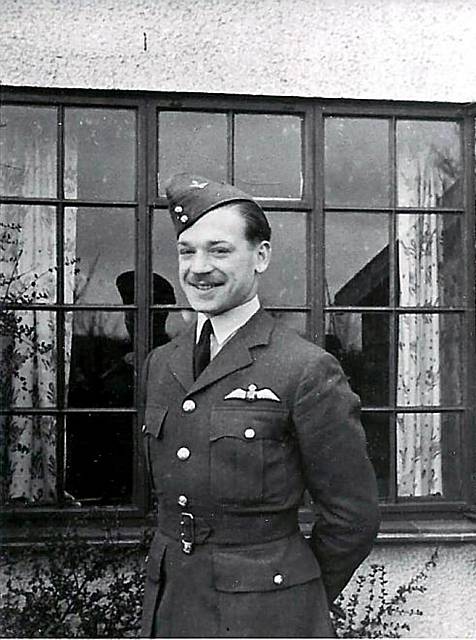Vapour trails of pilot’s past
Reporter: KAREN DOHERTY
Date published: 08 July 2010

FLYING officer Thomas Higgs
Oldham airman’s story brought to life
SEVENTY years ago a British radar picked up a German air formation heading across the French coast towards Folkestone.
Hurricanes and Spitfires were scrambled from a number of air bases including Croydon, where flying officer Thomas Peter Kingsland Higgs, from Oldham, was stationed.
The vapour trails and dogfights over the south coast on July 10 marked the first major encounter of the Battle of Britain, one of the decisive moments of the Second World War.
Thomas was the only Brit who lost his life that day, the first of many young airmen killed during the summer defending the skies against the Nazi Luftwaffe.
The 23-year-old’s Hurricane spun out of control when it clipped a German Dornier, sending both aircraft plummeting into the Channel.
Thomas was the grandson of reformer Mary Higgs who was awarded the OBE for services to Oldham.
Author Carol Talbot, from Austerlands, came across the connection while researching a historical novel inspired by the life of the staunch campaigner for better rights for the poor and homeless.
The retired primary school teacher explained: “I first found out about Mary Higgs when I was doing research for a course at Manchester Metropolitan University.
“I started to think she was a fascinating woman, she did so much ground-breaking stuff.
“I managed to get in touch with her two granddaughters in America. One told me about her life and her brother who was in the airforce.”
Mary was the first woman to gain a degree in natural science at Cambridge and only the third to attend the university.
After finishing her studies she married Rev Thomas Kilpin-Higgs who was vicar at Greenacres Congregational Church from 1891 to 1907. Mary was friends with philanthropist Dame Sarah Lees and her daughter, Marjorey, who funded many of her projects.
They established the Beautiful Oldham Society in response to claims that the town was one of grime and devastation — one of its legacies was Mary’s idea for a garden suburb.
Mary would disguise herself as a tramp to visit hostels and refuges to see for herself what life was like for the homeless. She opened women’s hostels in Esther Street, Greenacres, and Bent House, West Street, and also wrote a weekly column for the Chronicle until her death in 1937.
Thomas, the son of an electrical engineer with Ferranti, lived with his grandmother for a time at Bent House and followed in her footsteps to Oxbridge where he studied at Merton College, Oxford.
A member of the Oxford University Air Squadron, he joined 111 squadron Royal Air Force at Croydon and gained promotion from a pilot officer to a flying officer.
On August 15, 1940, his body was washed ashore on the Dutch coast. He is believed to have drowned in the North Sea and is buried in Noordwijk General Cemetery.
“How Mary would have felt about her grandson being a pilot I do not know,” added Carol. “Although a congregationalist, she became a quaker during the First World War because she was totally against conscription.”
Most Viewed News Stories
- 1New nursery moving into basement of old people’s home
- 2Councillor challenges village post box issues
- 3‘Completely inappropriate’ caravan park plans rejected
- 4Six arrests secured as police Operation Vulcan drive continues to tackle drug importation in Derker...
- 5Major rule changes beckon for bus pass holders




